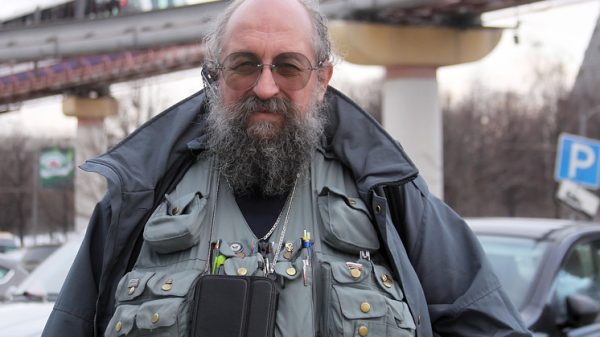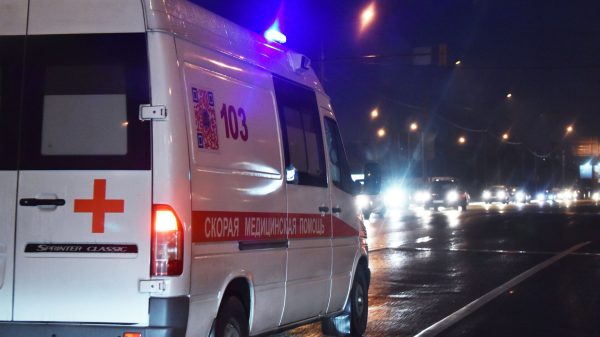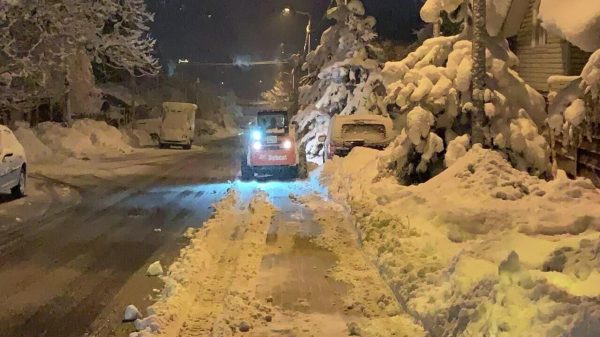Why is coronavirus rising in parts of southern England?
One factor could be a new strain of coronavirus that has shown up in England’s genomic surveillance in the past two months. The strain contains a number of different mutations and has been detected in parts of the south where cases of the virus are rising fastest, according to the health secretary, Matt Hancock.
Quick guide When and how will I be able to get a Covid vaccine in the UK?
Show
Hide
Now that the UK has authorised the first Covid vaccine, who will get it first?
The government’s Joint Committee on Vaccination and Immunisation (JCVI) says its priority is to prevent Covid-related deaths and protect health and social care staff and systems.
Elderly care home residents and their carers are first on the JCVI’s list because their risk of exposure to the virus is higher and because the risk of death closely correlates with older age. They are followed in priority by anyone else over 80 and frontline health and social care workers.
Even so, for pragmatic reasons NHS staff are likely to be the first group to receive the Pfizer/BioNTech jab. This is because the vaccine needs to be stored at ultra-cold temperatures, which can be achieved more easily by using hospital facilities
Are there enough doses to reach all the priority groups?
Together, care home residents, their carers and the over-80s make up nearly 6 million people, and frontline NHS staff a further 736,685. Matt Hancock, the health secretary, has said he expects 10m doses of the Pfizer/BioNTech vaccine to be available this year, so if this is the only vaccine authorised, everyone else would have to wait until further doses become available next year.
Where will I go for the vaccine?
Covid-19 vaccines are expected to be delivered at three types of venue: NHS trust “vaccine hubs” at hospital sites; mass vaccination centres, which are in the process of being set up at places such as football stadiums, conference buildings and racecourses – these are expected to vaccinate up to 5,000 people a day; and at GP surgeries and pharmacies. GPs can also visit care home residents and housebound patients at home without them needing to travel.
How far apart will the two doses be administered, and will I protected after the first?
While there is some evidence to indicate high levels of short-term protection from a single dose of vaccine, a two-dose schedule is what has been approved by the MHRA.
The second dose will need to be delivered at least 21 days after the first, and both will be injected into the deltoid muscle – the thick triangular muscle we use to raise each arm.
For the Pfizer vaccine, its efficacy rate was calculated seven days after the second shot. It is likely that people will have some protection before this, but this is how long it will take for full protection to kick in. We will learn more about the extent of protection and how long it lasts as data from ongoing clinical trials comes in.
Can I pay to get the vaccine privately?
Unlikely. England’s deputy chief medical officer, Jonathan Van-Tam, has said he believes Covid-19 vaccines should be delivered according to clinical priority rather than allowing people to jump the queue if they can afford it.
Will I be able to choose which vaccine I have?
Also unlikely, at least in the short to medium term. Assuming more than one vaccine is approved, the priority will be distributing any available doses to the people who need it as quickly as possible.
Linda Geddes
Was this helpful?
Thank you for your feedback.
He said initial analysis suggested the new strain was growing faster than existing variants. Though predominantly in the south, more than 1,000 cases have been spotted in nearly 60 local authorities, he added, “and the numbers are growing rapidly”.
Is the new strain more dangerous?
There is no suggestion the virus is any more dangerous than other Sars-CoV-2 coronaviruses. A more complete picture of whether it is linked to differences in symptoms or the duration or severity of disease will emerge as scientists collect additional data. Researchers on the Covid-19 Genomics UK (Cog-UK) consortium detected the variant and will be monitoring its movement around the country. They analyse the genetic code of about 10% of coronavirus cases and share the sequences immediately.
Alan McNally, a professor in microbial evolutionary genomics at the University of Birmingham, said a few UK testing labs had detected the variant in recent weeks. “Huge efforts are ongoing at characterising the variant and understanding its emergence,” he said. “It is important to keep a calm and rational perspective on the strain as this is normal virus evolution and we expect new variants to come and go and emerge over time.”
Why might it spread faster?
Viruses acquire mutations all the time. Most have little or no effect, and some will hinder the virus, leading those mutations to die out. But mutations are possible that make the virus transmit faster. Early in the UK’s outbreak, a mutant form called D614G spread through the country and is now the most common variant. It may spread faster because the mutation makes the virus bind more strongly to human cells, making an exposure more likely to result in infection.
What does this mean for vaccines?
Because viruses mutate, there is always the chance a new strain will emerge that is resistant to existing vaccines. Most Covid vaccines produce antibodies that disable the virus by gumming up its spike proteins. These stud the surface of the virus and help it enter human cells. If the spike protein mutates substantially, it could potentially evade antibodies generated by vaccines using an older version of the spike protein. The new variant has mutations in the spike protein.
But two points are important: vaccines produce a range of antibodies that attack the virus from different angles, so it is hard for a virus to evade all of them at once. Second, major mutations would probably affect the virus’s ability to infect human cells. Geneticists are already monitoring the virus for mutant forms that achieve what they call “vaccine escape”. Research is now underway at Porton Down and other labs to check whether the new strain could pose problems. If the virus does mutate into a resistant form, vaccines can be tweaked to make them effective again.
Dr Michael Ryan, the executive director of the World Health Organization (WHO) emergencies programme, said it was aware of the variant. “This kind of evolution and mutations are actually quite common,” he said. “The question, as we’ve had most recently with the mink variants in Denmark and previous variations, is: Does this make the virus more serious? Does it allow the virus to transmit more easily? Does it in any way interfere with diagnostics? Would it in any way interfere with vaccine effectiveness? None of these questions are addressed yet.”
Prof Wendy Barclay of Imperial College London, and a member of the Scientific Advisory Group on Emergencies (Sage), said: “This variant contains some mutations in spike protein that is the major target of vaccines, and it will be important to establish whether they impact vaccine efficacy by performing experiments in the coming weeks.”
What else might have caused cases to rise in southern England?
In different areas, causes combine in different ways to drive the local outbreaks. In the capital, the pandemic has pushed many people from city centre offices into more residential areas. As a result, those have become busier, particularly the boroughs with the greatest density of housing. With the second national lockdown being less stringent than the first, with schools and more shops remaining open, and London exiting into tier 2 in December, conditions were ripe in some boroughs for cases to increase. “You suddenly have a situation where because so many people live there, you can supercharge the spread,” said James Cheshire, a professor of geographic information and cartography at University College London.
Was London put into the wrong tier post-lockdown?
Within weeks of Boris Johnson introducing the three-tier system in October, scientists on Sage had evidence that only tier 3 had a substantial impact on transmission of the virus. The rise in cases in London confirms that conclusion. In Bristol, tier 3 restrictions have helped drive down infections, reversing what had been a sharp rise in cases.
“I suspect that what we are seeing is that tier 2 is not effective enough at preventing the transmission of Covid, so as soon as the national lockdown ended again and people started mixing more – especially in a high density area like London – the disease spread,” said Richard Harris, a professor of quantitative social geography at Bristol University.
“London is a large, high-density city with a young population and commuting patterns that extend across the south-east,” he added. “It appears to have come out of tighter controls too soon, no doubt driven by the economic cost to it and also to the whole country of putting it into tier 3.”
Why did the virus surge later in the south compared with northern England?
One theory is that the first national lockdown was eased when cases were lower in the south than the north. While the outbreak bounced back rapidly in parts of northern England and the Midlands, it took more time to re-establish widespread transmission in London and other parts of the south. But there are other factors at play.
Many of the worst-hit areas in Liverpool, Manchester and Birmingham are among the poorest in the country and coronavirus spreads faster in more deprived areas. Employment plays a large role. In the south, a larger proportion of the workforce could work from home, avoiding public transport and contact with others. Those with more secure jobs were under less pressure to work when they felt sick, and were better able to self-isolate if they caught the infection.




















































Свежие комментарии